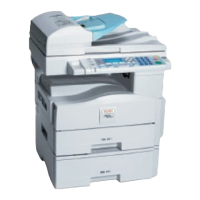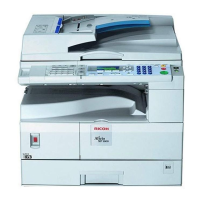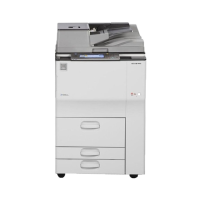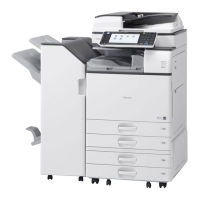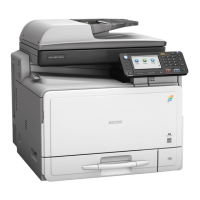Encrypting Data on the Hard Disk
This can be specified by the machine administrator.
For details about logging in and logging out with administrator authentication, see "Logging in Using
Administrator Authentication" and "Logging out Using Administrator Authentication".
Prevent information leakage by encrypting the Address Book, authentication information, and stored
documents as the data is written. In addition, if the machine malfunctions or needs to be replaced, your
service representative can easily transfer existing data to a new machine.
When the
data encryption settings are enabled, an encryption key is generated and this is used to restore
the data. This key can be changed at any time.
Data that is Encrypted
This function encrypts data that is stored in the machine's NVRAM (memory that remains even after
the machine has been turned off) and on the hard disk.
The following data is encrypted:
• Address Book data
• User authentication information
• Data stored in Document Server
• Temporary stored documents
• Logs
• Network I/F setting information
• System settings information
• p.33 "Logging in Using Administrator Authentication"
• p.34 "Logging out Using Administrator Authentication"
Enabling the Encryption Settings
Use the following procedure to enable the encryption settings at initial set up, or after encryption settings
have been canceled and settings must be made again.
• The encryption key is required for data recovery if the machine malfunctions. Be sure to store the
encryption key safely for retrieving backup data.
• Encryption begins
after you have completed the control panel procedure and rebooted the machine
by turning off and on the main power switch. If there is unencrypted data on the hard disk that must
be both transferred and encrypted, rebooting will take about seven hours. If there is encrypted data
on the hard disk that must be re-encrypted, rebooting will also take about seven hours. If both the
Encrypting Data on the Hard Disk
121

